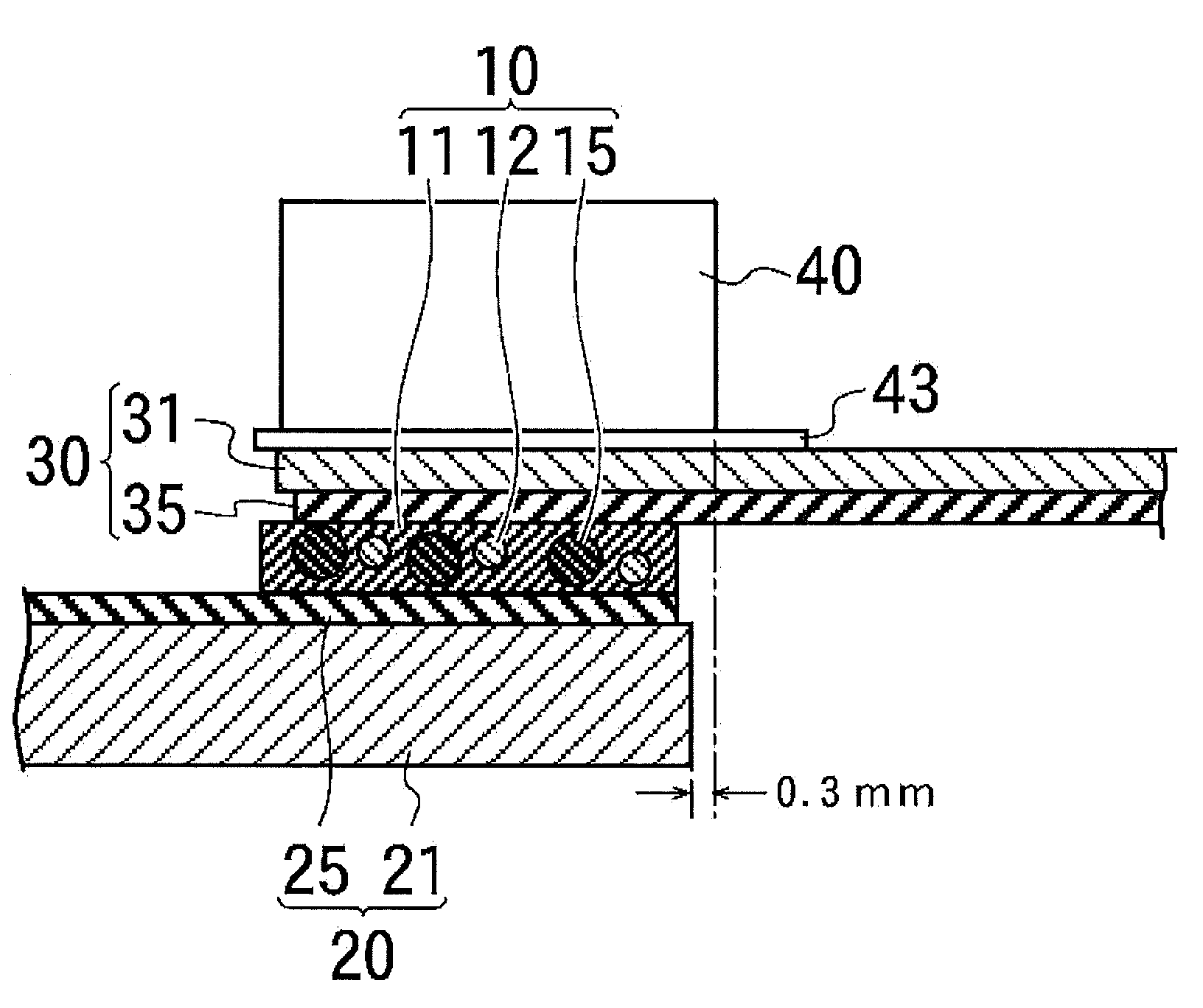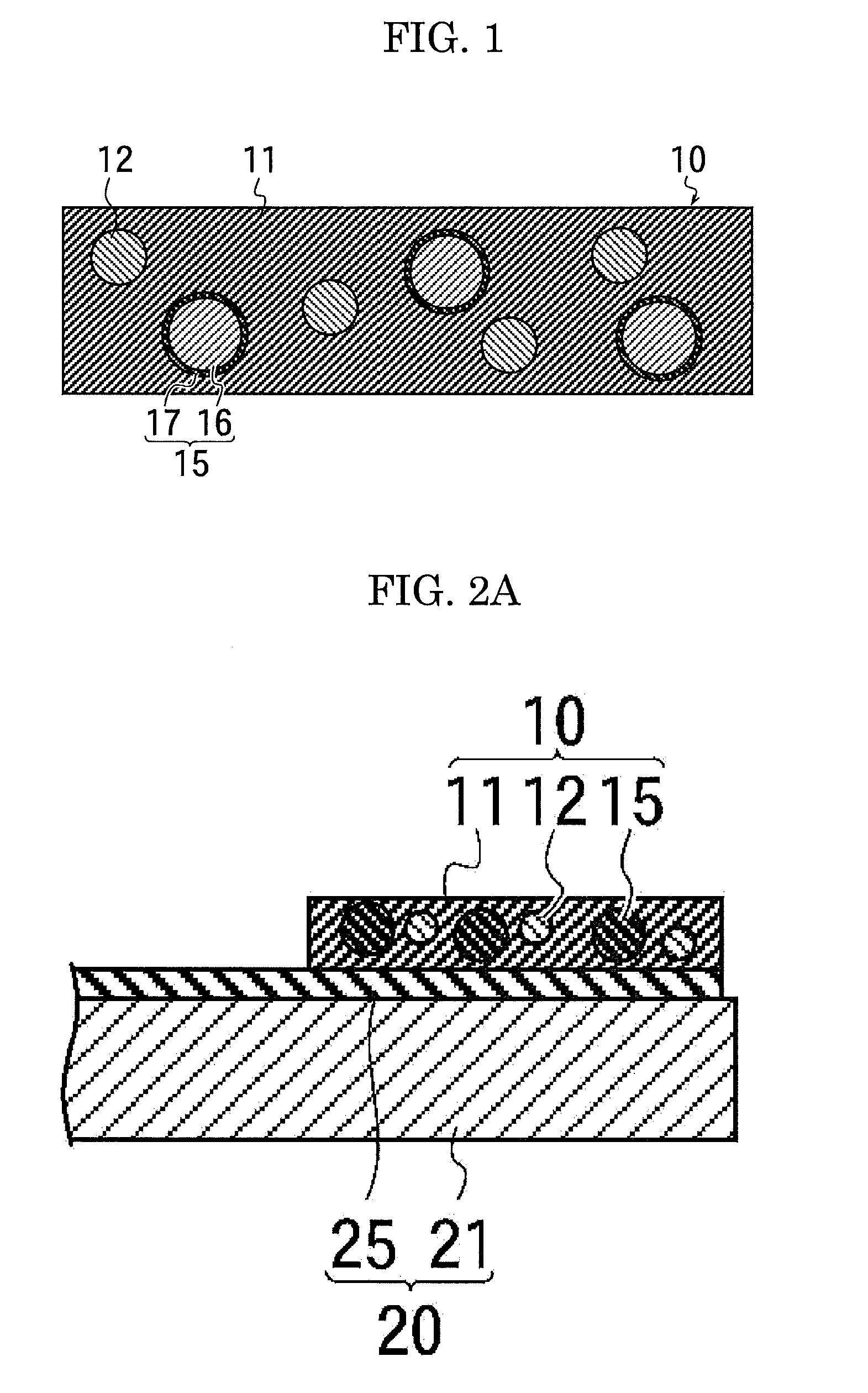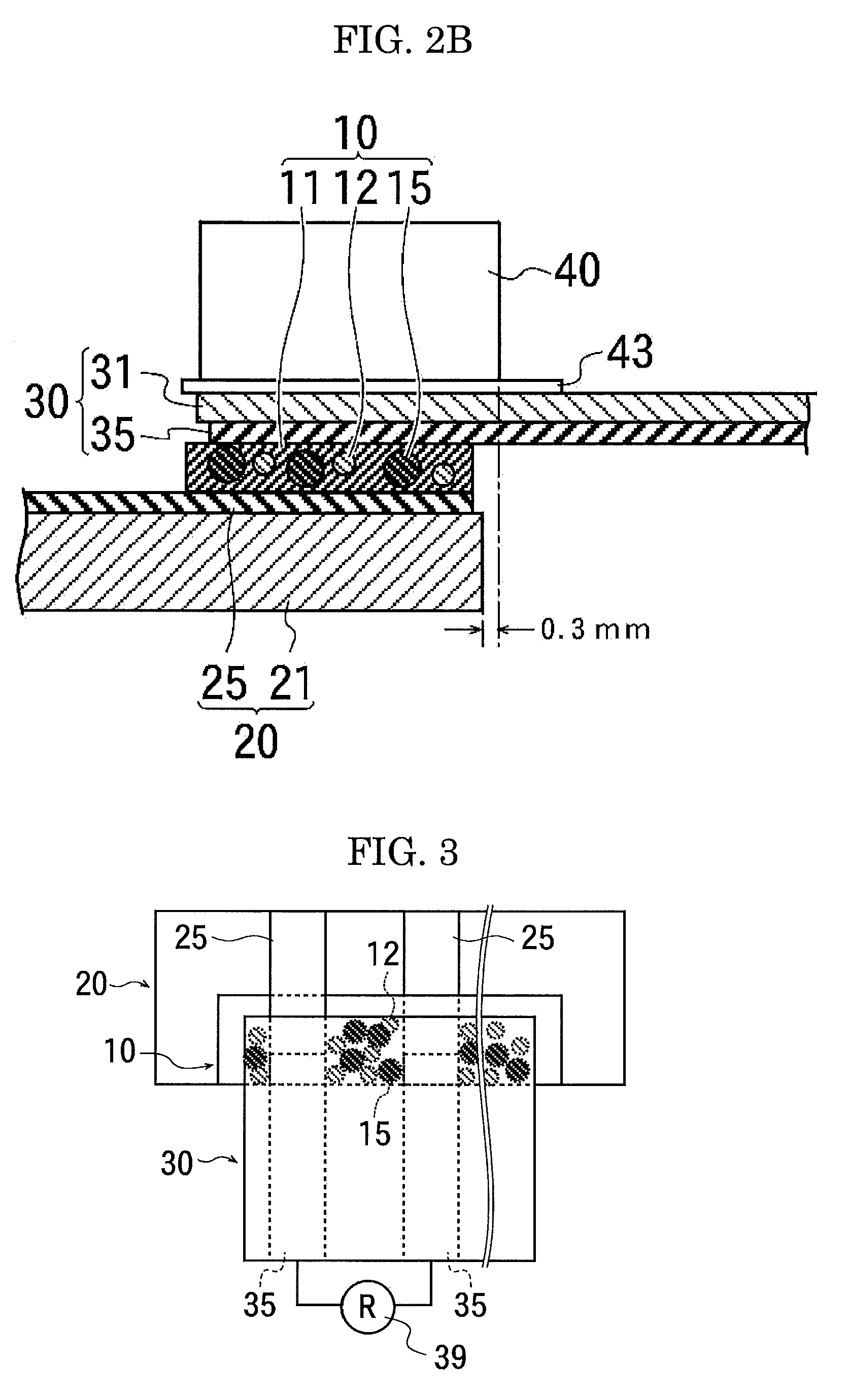Method for connecting electronic part and joined structure
a technology of joining structure and electronic part, which is applied in the direction of coupling device connection, paper/cardboard container, bandage, etc., can solve the problems of short circuit between the terminals, reduced properties of the conductive particles themselves, and conduction failure, etc., to achieve accurate counting, low conductive resistance, and high conduction reliability
- Summary
- Abstract
- Description
- Claims
- Application Information
AI Technical Summary
Benefits of technology
Problems solved by technology
Method used
Image
Examples
Embodiment Construction
Method for Connecting Electronic Part
[0037]The method for connecting an electronic part of the present invention contains at least a mixing step and a heat-pressurizing step, and may further contain other steps as necessity.
[0038]The mixing step is mixing a dispersing solvent, an adhesive resin which is dissolved in the dispersion solvent, conductive particles, insulating particles each of which has a smaller particle diameter than that of the conductive particles, and arbitrarily selected other components as necessity, so as to prepare an anisotropic conductive adhesive.
—Dispersing Solvent—
[0039]The dispersing solvent is suitably selected depending on the intended purpose without any restriction. The dispersing solvent is not limited to a mixed solvent of ethyl acetate and toluene, but organic solvents such as methylethylketone (MEK), toluene, propyleneglycol monomethylether acetate (PGMAC), and ethyl acetate may be used. These organic solvents do not dissolve the organic-inorganic...
PUM
| Property | Measurement | Unit |
|---|---|---|
| particle diameter | aaaaa | aaaaa |
| thickness | aaaaa | aaaaa |
| temperature | aaaaa | aaaaa |
Abstract
Description
Claims
Application Information
 Login to View More
Login to View More - R&D
- Intellectual Property
- Life Sciences
- Materials
- Tech Scout
- Unparalleled Data Quality
- Higher Quality Content
- 60% Fewer Hallucinations
Browse by: Latest US Patents, China's latest patents, Technical Efficacy Thesaurus, Application Domain, Technology Topic, Popular Technical Reports.
© 2025 PatSnap. All rights reserved.Legal|Privacy policy|Modern Slavery Act Transparency Statement|Sitemap|About US| Contact US: help@patsnap.com



